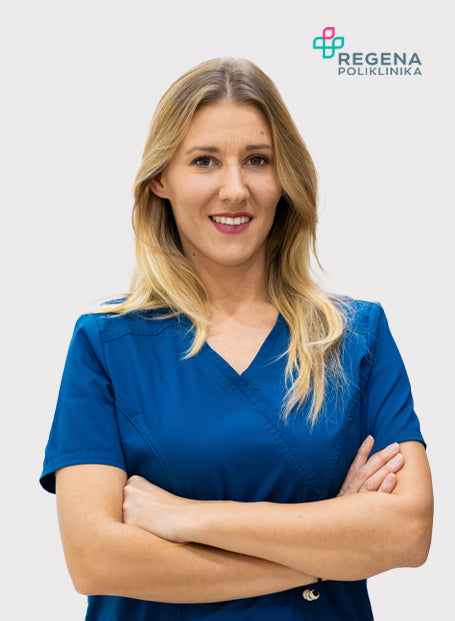
SKIN CHANGES DURING PREGNANCY
Pregnancy brings various physical changes to a woman's body, and the skin is no exception.
Hormonal changes, increased blood volume and changes in metabolic processes in the body can lead to numerous changes on the skin during pregnancy. These changes can be both temporary and permanent, affecting the appearance, texture and overall health of the skin.
One of the most common skin changes during pregnancy is pregnancy glow . This is often attributed to increased blood circulation and a rise in hormones, especially progesterone and estrogen. These hormonal changes can give the skin a brighter appearance. However, increased blood flow can also cause visible veins, especially on the legs, and lead to spider veins or varicose veins, which are visible under the skin.
Another significant change is hyperpigmentation , which manifests itself as darker spots on the skin due to increased melanin production. A common manifestation of this is the linea nigra , a dark line that runs vertically from the navel to the pubic area. In addition, some women may notice darkened areas on the face, commonly called melasma or the "mask of pregnancy." These skin pigmentations usually appear on the forehead, cheeks and upper lip.
Stretch marks are another well-known skin change during pregnancy. As the body grows to accommodate the developing baby, the skin stretches and the underlying connective tissue can tear, resulting in red, purple or light streaks. These marks usually appear on the stomach, chest, hips and thighs. Although stretch marks are harmless, they can be a cosmetic problem for many women. Although their appearance often fades over time, they generally do not disappear completely.
Increased sebum production due to hormonal fluctuations can also lead to changes in skin texture. In some women, this leads to acne , especially during the first trimester. Pregnant women may find that their skin becomes oilier or more prone to breakouts. On the other hand, some women experience a decrease in sebum, which leads to dry patches and skin irritation.
In addition, pregnant women may experience pruritic urticarial papules and plaques of pregnancy (PUPPP), a skin condition characterized by red, itchy bumps, usually starting on the abdomen in the area of stretch marks. Although not harmful to the baby, PUPPP can be quite uncomfortable.
Also, during pregnancy, new moles often grow, existing ones grow, and quite often a large number of new fibromas and seborrheic keratoses appear on the skin in people who have a tendency to develop these changes.
Although these skin changes are common, it is important to note that every pregnancy is unique and not all women will experience the same skin problems. Most changes are temporary and tend to improve or disappear after childbirth. However, if any skin condition becomes worrisome or uncomfortable, it is always wise to consult a physician for further guidance.

